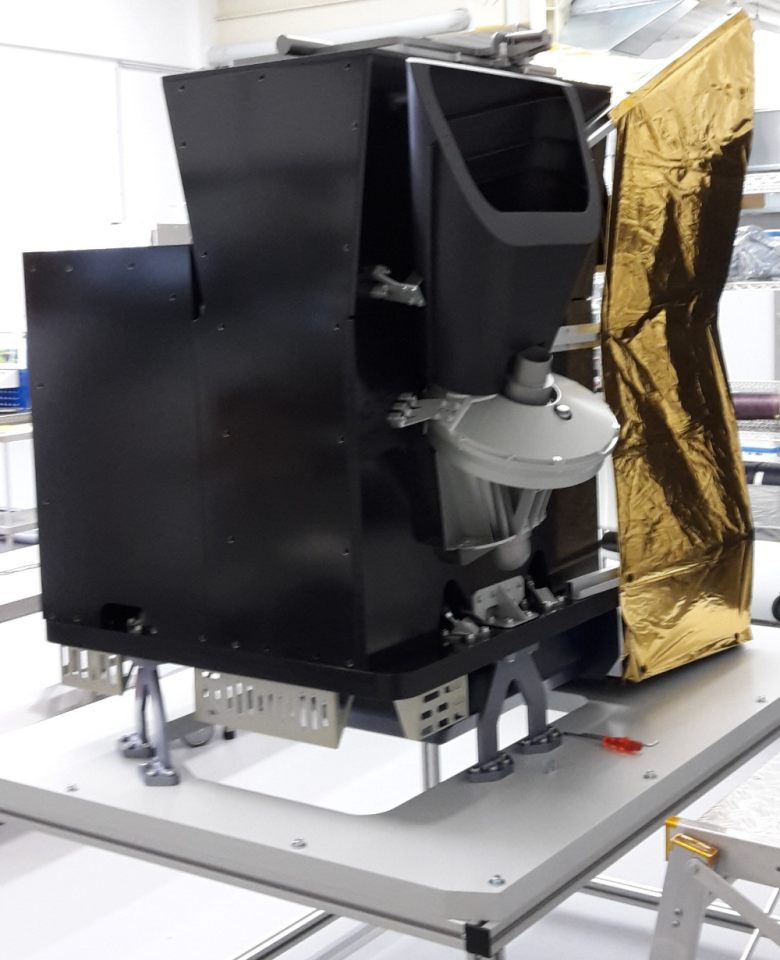The geostationary Sentinel-4 mission will provide hourly data on tropospheric constituents over Europe mainly for air quality applications. The target species of the Sentinel-4 mission include the key air quality parameters NO2 (nitrogen dioxide), O3 (ozon), SO2 (sulfur dioxide), HCHO (formaldehyde), CHOCHO (glyoxal), and aerosols. Complementarily, the Low Earth Orbit Sentinel-5 and 5P missions will deliver the Sentinel-4 target species and additionally CO (carbon monoxide), CH4 (methane), and stratospheric O3 (ozone) with global daily coverage for climate, air quality, and ozone/surface UV applications.
The Sentinel-4 mission differs from Sentinel-1, 2, 3 and 6 in that it is made up of instruments that will be carried onboard satellites by the European Organisation for the Exploitation of Meteorological Satellites (EUMETSAT) instead of their own dedicated platform. The mission consists of the ‘UVN' imaging spectrometer instrument, which comprises three main units: the Optical Instrument Module (OIM), the Instrument Control Unit (ICU), and the Scanner Driving Electronics (SDE). Two identical Sentinel-4 instruments (PFM and FM-2) will be embarked respectively onto two geostationary MTG-S satellites which will be operated by EUMETSAT. The first MTG-S satellite is expected to be launched in 2024.

Mock-up of the Optical Instrument Module (OIM) unit.
Sentinel-4 instrumentation
The Sentinel-4 mission consists of a single instrument payload; a passive UVN (Ultraviolet-Visible-Near-Infrared) hyperspectral imaging spectrometer that is capable of imaging in the ultraviolet and visible range. The main characteristics of Sentinel-4 instrument can be summarised as follows:
- Instrument type: passive imaging spectrometer
- Number of spectrometric bands: three Ultraviolet (305-400 nm), Visible (400-500 nm) and Near Infrared (750-775 nm) bands implemented in two spectrometers (UVVIS & NIR)
- Number of spectrometric channels: 2 (UV-VIS & NIR)
- Configuration: Push broom scanning (scan in the E/W direction).
- Design lifetime: 8.5 years
- Revisit time: about 60 min.
More on Copernicus
The Copernicus Programme is an Earth observation initiative that forms a crucial part of the European Union Space Programme. Managed by the European Commission in collaboration with various European organizations such as the European Space Agency (ESA), the European Organisation for the Exploitation of Meteorological Satellites (EUMETSAT) and the European Centre for Medium-Range Weather Forecasts (ECMWF), Copernicus aims to establish a comprehensive Earth observation capacity that is global, continuous, autonomous, and of high quality. The primary objective of the programme is to provide accurate, timely, and easily accessible information to improve environmental management, understand and mitigate the impacts of climate change, and ensure civil security.
Click here to visit our dedicated Copernicus page